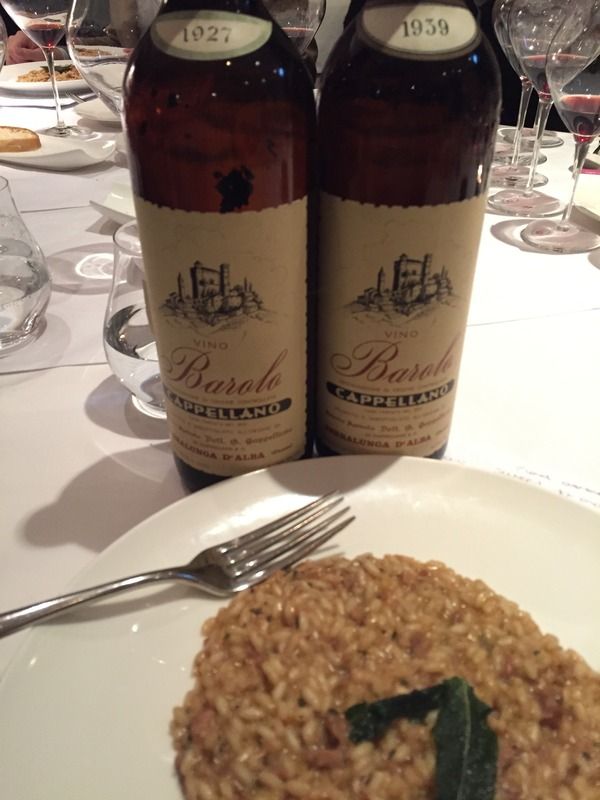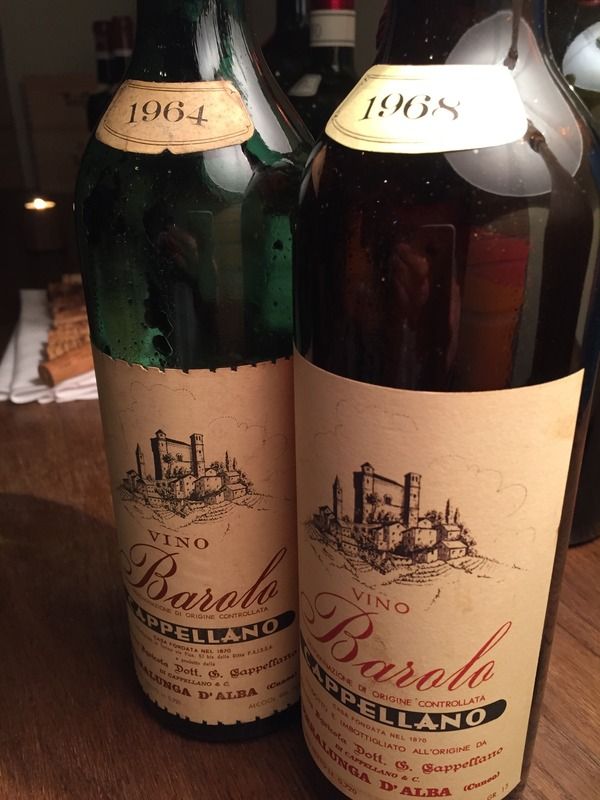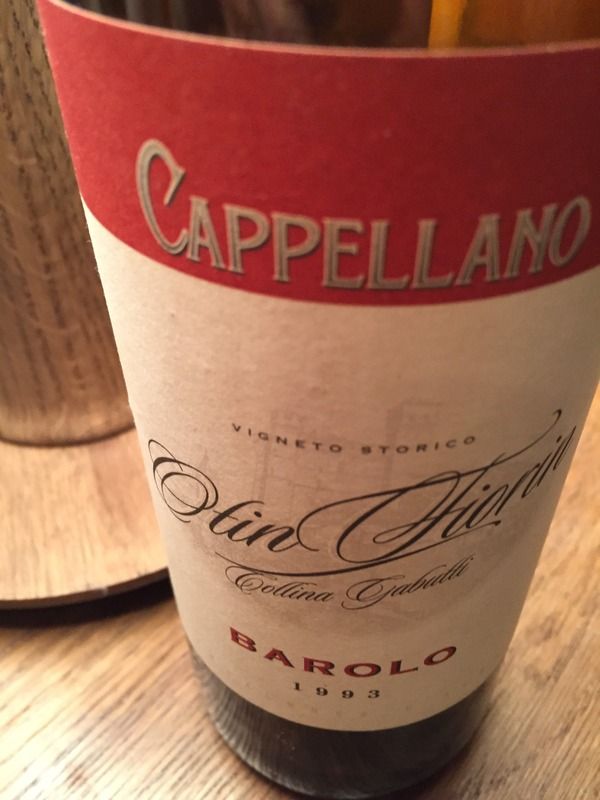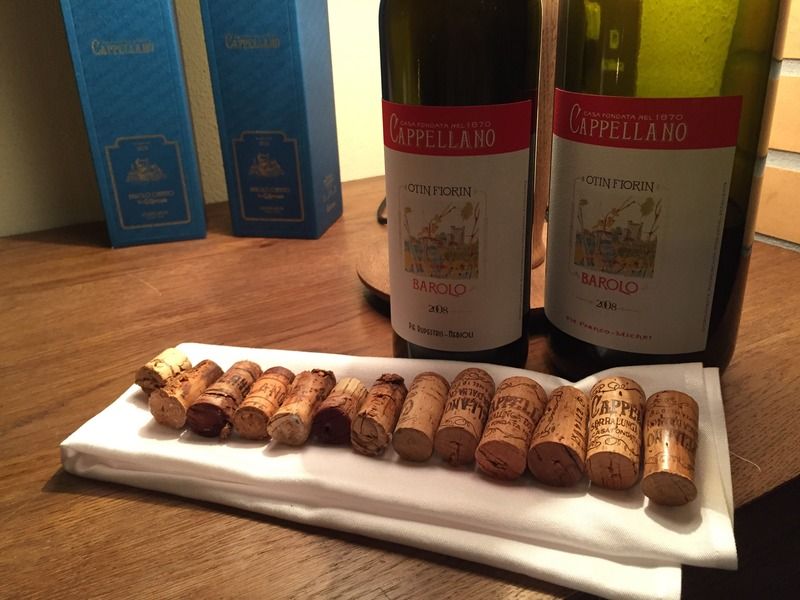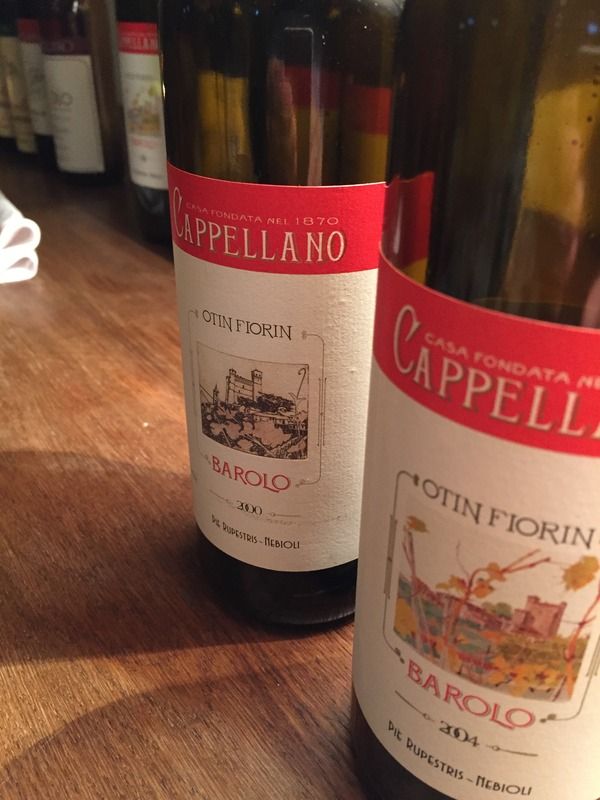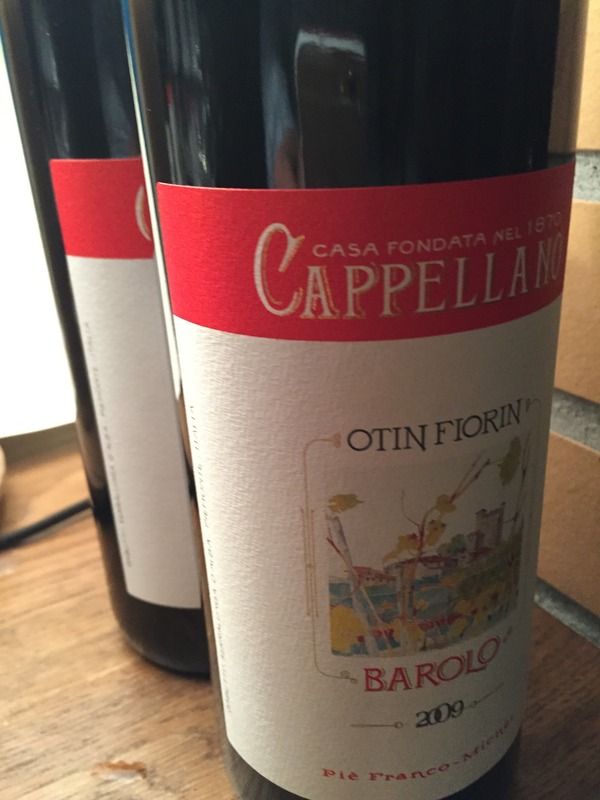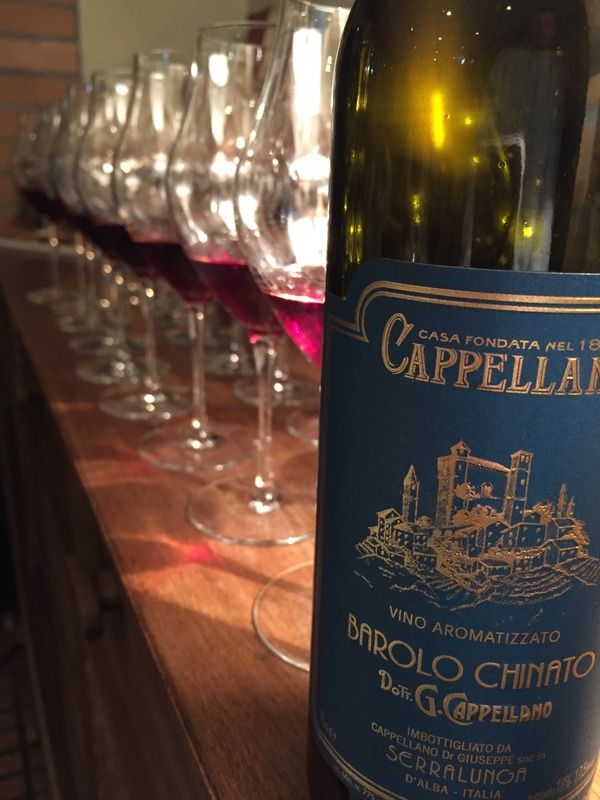HKWS Vertical & Horizontal of Cappellano’s Barolos: 1927 to 2010
Posted: Sat Mar 18, 2017 1:07 pm
Vertical & Horizontal of Cappellano’s Barolos: 1927 to 2010
Location: Giando Italian Restaurant, Star St, Pacific Place 3
Time: 7pm
Price:
Reply-to:
NB: Confirmed seats inset, please contact Nigel only in case of error
Dear Jamie,
This is the first exclusive tasting by the HKWS of Cappellano’s barolos. Cappellano is one of the greatest producers in all of Barolo, and they’ve never received a 100, 95 or even a 90-point score from any modern-day Italian wine critic. The decision to reject the scoring of critics came from Teobaldo Cappellano in 1983, who believed winemaking a be an art form, a work of passion, and one that should not be encapsulated into a single number. Nor did he believe that it was healthy for fellow producers, seeing it as being divisive. Teobaldo passed on in 2009, but his work is being continued by his son. Augusto
This event benefits from Alan Kwok’s relationship with Cappellano going back some years. The wines will reflect 2 eras of Cappellano: the traditional single-label ‘Barolo’ period, from 1927 to 1993, and then modern period when the two classic pareels that have garnered even more acclaim for the wines of Cappellano: Barolo “Rupestris,” from a parcel planted on grafted rootstock in the 1940s which produce a Barolo of superb depth of colour and remarkable richness and length, and the now almost mythic “Piè Franco,” from a parcel planted in 1989 on its own roots – i.e. ‘franc de pied - with Nebbiolo’s “Michet” clone.
Tasting wines : single-bottle tasting
Cappellano Barolo DOCG, NEBBIOLO, Piedmont 1927
Cappellano Barolo DOCG, NEBBIOLO, Piedmont 1939
Cappellano Barolo DOCG, NEBBIOLO, Piedmont 1964
Cappellano Barolo DOCG, NEBBIOLO, Piedmont 1968
Cappellano Barolo DOCG, NEBBIOLO, Piedmont 1978
Cappellano Barolo DOCG, NEBBIOLO, Piedmont 1993
Cappellano Otin Fiorin Pie Rupestris - Nebbiolo, Barolo 2000
Cappellano Otin Fiorin Pie Rupestris - Nebbiolo, Barolo 2004
Cappellano Otin Fiorin Pie Rupestris - Nebbiolo, Barolo 2008
Cappellano Otin Fiorin Pie Rupestris - Nebbiolo, Barolo 2010
Cappellano Otin Fiorin Pie Franco - Nebbiolo, Barolo 2008
Cappellano Otin Fiorin Pie Franco - Nebbiolo, Barolo 2010
Dinner wines :
Cappellano Otin Fiorin Pie Franco - Nebbiolo, Barolo 2009
Cappellano Otin Fiorin Pie Rupestris - Nebbiolo, Barolo 2009
Cappellano Otin Fiorin Pie Rupestris - Nebbiolo, Barolo 2005
Cappellano Otin Fiorin Pie Rupestris - Nebbiolo, Barolo 2001
Cappellano Otin Fiorin Pie Rupestris - Nebbiolo, Barolo 1993
Cappellano Chinato NV
Dinner Menu
Insalata di bagna cauda: Piedimont Mix garden vegetables salad with anchovies sauce and quail egg
Ravioli alle erbe: Homemade classic Ravioli filled with Italian wild herbs and Ricotta cheese served with butter and walnuts sauce
Risotto alle quaglie: Quail Risotto with sage
Guancia di manzo brasata al vino rosso: Braised beef cheek, red wine sauce, celery roots puree and roasted red onions
Mousse al cioccolato: Chocolate mousse
The Wines of Cappellano
Barolo is an area where fiercely independent people make extraordinary wines. Yet, even in such company, Teobaldo Cappellano, who passed away on February 21, 2009, stood out for his unique philosophy, his meticulous winemaking and the profound character of his wines. A legend in Barolo—and among artisanal growers throughout Italy—Cappellano was one of the last of the region’s great traditionalist winemakers—and he was one of Barolo’s most compelling personalities. In 1983 he banished all journalists from his cellar, unless they agreed to review his wines without scores. (He saw ratings as divisive among growers.) And he may have been the only person who, during his lifetime, made a Barolo from ungrafted vines. With his passing, his son Augusto will continue Teobaldo’s important work, which includes producing the family’s renowned Barolo “Piè Franco” and Barolo “Rupestris”
The near-universal admiration accorded Cappellano was striking, given that his attitudes were often controversial. Variously described as a “wine artist,” “professional polemist,” and a “poet, philosopher and winemaker in his spare time,” he was president of the influential Vini Veri (or “true wine”) group. He was also a longtime leader of Italy’s sustainable agriculture movement. Cappellano has been compared to Bartolo Mascarello, both as a beloved figure and in the depth of his views. And his Barolos were just as firmly rooted in local traditions as were the late Mascarello’s. Cappellano made fewer than 800 cases of Barolo per year, all vinified traditionally: a fermentation of 14 to 21 days with indigenous yeasts and aging in well-seasoned botti for at least three years. His tiny production quickly disappeared into collectors’ cellars in Italy, Switzerland and Germany. As Antonio Galloni once wrote, “Cappellano’s wines are impossibly hard to find, even in neighbouring Alba.”
The Barolos that Cappellano made are classic “old-style” wines, marked by a haunting scent of dried roses and a hint of truffle. Yet, because of his stance on ratings, little has been written about them in America. He made two Barolos—both from the mythic Gabutti vineyard on Serralunga’s best slope. (A few years ago, he removed the Gabutti designation from his labels to protest the expansion of the appellation to include inferior sites.) Two-thirds of his Barolo production was Barolo “Rupestris,” from a parcel planted on grafted rootstock in the 1940s. The grapes from this parcel produce a Barolo of superb depth of colour and remarkable richness and length. His other Barolo was the mythic “Piè Franco,” from a parcel planted on its own roots with Nebbiolo’s “Michet” clone in 1989. The ethereal delicacy of this great wine made Cappellano wonder if this is what Barolo tasted like before Phylloxera.
Cappellano also continued his family’s tradition of making a small amount of their legendary elixir, Barolo Chinato, an infusion of Barolo with quinine bark, clove, wormwood and cinnamon and a small amount of cane sugar. For Cappellano, winemaking was an art. As he told Maurizio Rosso in The Mystique of Barolo, “Making Barolo is hedonism, it is art. Wine is hedonism. But wine, too, needs identity: I need to be able to say “This is Barolo.” Teobaldo Cappellano was a once-in-a-generation winemaker who not only made great wine, he encouraged us all to expect more of ourselves. His son Augusto will carry on Teobaldo’s legacy, assuring us of many more great Cappellano Barolos. Schooled by his father not only in the art, but the philosophy, of winemaking, we can expect nothing less.
Location: Giando Italian Restaurant, Star St, Pacific Place 3
Time: 7pm
Price:
Reply-to:
NB: Confirmed seats inset, please contact Nigel only in case of error
Dear Jamie,
This is the first exclusive tasting by the HKWS of Cappellano’s barolos. Cappellano is one of the greatest producers in all of Barolo, and they’ve never received a 100, 95 or even a 90-point score from any modern-day Italian wine critic. The decision to reject the scoring of critics came from Teobaldo Cappellano in 1983, who believed winemaking a be an art form, a work of passion, and one that should not be encapsulated into a single number. Nor did he believe that it was healthy for fellow producers, seeing it as being divisive. Teobaldo passed on in 2009, but his work is being continued by his son. Augusto
This event benefits from Alan Kwok’s relationship with Cappellano going back some years. The wines will reflect 2 eras of Cappellano: the traditional single-label ‘Barolo’ period, from 1927 to 1993, and then modern period when the two classic pareels that have garnered even more acclaim for the wines of Cappellano: Barolo “Rupestris,” from a parcel planted on grafted rootstock in the 1940s which produce a Barolo of superb depth of colour and remarkable richness and length, and the now almost mythic “Piè Franco,” from a parcel planted in 1989 on its own roots – i.e. ‘franc de pied - with Nebbiolo’s “Michet” clone.
Tasting wines : single-bottle tasting
Cappellano Barolo DOCG, NEBBIOLO, Piedmont 1927
Cappellano Barolo DOCG, NEBBIOLO, Piedmont 1939
Cappellano Barolo DOCG, NEBBIOLO, Piedmont 1964
Cappellano Barolo DOCG, NEBBIOLO, Piedmont 1968
Cappellano Barolo DOCG, NEBBIOLO, Piedmont 1978
Cappellano Barolo DOCG, NEBBIOLO, Piedmont 1993
Cappellano Otin Fiorin Pie Rupestris - Nebbiolo, Barolo 2000
Cappellano Otin Fiorin Pie Rupestris - Nebbiolo, Barolo 2004
Cappellano Otin Fiorin Pie Rupestris - Nebbiolo, Barolo 2008
Cappellano Otin Fiorin Pie Rupestris - Nebbiolo, Barolo 2010
Cappellano Otin Fiorin Pie Franco - Nebbiolo, Barolo 2008
Cappellano Otin Fiorin Pie Franco - Nebbiolo, Barolo 2010
Dinner wines :
Cappellano Otin Fiorin Pie Franco - Nebbiolo, Barolo 2009
Cappellano Otin Fiorin Pie Rupestris - Nebbiolo, Barolo 2009
Cappellano Otin Fiorin Pie Rupestris - Nebbiolo, Barolo 2005
Cappellano Otin Fiorin Pie Rupestris - Nebbiolo, Barolo 2001
Cappellano Otin Fiorin Pie Rupestris - Nebbiolo, Barolo 1993
Cappellano Chinato NV
Dinner Menu
Insalata di bagna cauda: Piedimont Mix garden vegetables salad with anchovies sauce and quail egg
Ravioli alle erbe: Homemade classic Ravioli filled with Italian wild herbs and Ricotta cheese served with butter and walnuts sauce
Risotto alle quaglie: Quail Risotto with sage
Guancia di manzo brasata al vino rosso: Braised beef cheek, red wine sauce, celery roots puree and roasted red onions
Mousse al cioccolato: Chocolate mousse
The Wines of Cappellano
Barolo is an area where fiercely independent people make extraordinary wines. Yet, even in such company, Teobaldo Cappellano, who passed away on February 21, 2009, stood out for his unique philosophy, his meticulous winemaking and the profound character of his wines. A legend in Barolo—and among artisanal growers throughout Italy—Cappellano was one of the last of the region’s great traditionalist winemakers—and he was one of Barolo’s most compelling personalities. In 1983 he banished all journalists from his cellar, unless they agreed to review his wines without scores. (He saw ratings as divisive among growers.) And he may have been the only person who, during his lifetime, made a Barolo from ungrafted vines. With his passing, his son Augusto will continue Teobaldo’s important work, which includes producing the family’s renowned Barolo “Piè Franco” and Barolo “Rupestris”
The near-universal admiration accorded Cappellano was striking, given that his attitudes were often controversial. Variously described as a “wine artist,” “professional polemist,” and a “poet, philosopher and winemaker in his spare time,” he was president of the influential Vini Veri (or “true wine”) group. He was also a longtime leader of Italy’s sustainable agriculture movement. Cappellano has been compared to Bartolo Mascarello, both as a beloved figure and in the depth of his views. And his Barolos were just as firmly rooted in local traditions as were the late Mascarello’s. Cappellano made fewer than 800 cases of Barolo per year, all vinified traditionally: a fermentation of 14 to 21 days with indigenous yeasts and aging in well-seasoned botti for at least three years. His tiny production quickly disappeared into collectors’ cellars in Italy, Switzerland and Germany. As Antonio Galloni once wrote, “Cappellano’s wines are impossibly hard to find, even in neighbouring Alba.”
The Barolos that Cappellano made are classic “old-style” wines, marked by a haunting scent of dried roses and a hint of truffle. Yet, because of his stance on ratings, little has been written about them in America. He made two Barolos—both from the mythic Gabutti vineyard on Serralunga’s best slope. (A few years ago, he removed the Gabutti designation from his labels to protest the expansion of the appellation to include inferior sites.) Two-thirds of his Barolo production was Barolo “Rupestris,” from a parcel planted on grafted rootstock in the 1940s. The grapes from this parcel produce a Barolo of superb depth of colour and remarkable richness and length. His other Barolo was the mythic “Piè Franco,” from a parcel planted on its own roots with Nebbiolo’s “Michet” clone in 1989. The ethereal delicacy of this great wine made Cappellano wonder if this is what Barolo tasted like before Phylloxera.
Cappellano also continued his family’s tradition of making a small amount of their legendary elixir, Barolo Chinato, an infusion of Barolo with quinine bark, clove, wormwood and cinnamon and a small amount of cane sugar. For Cappellano, winemaking was an art. As he told Maurizio Rosso in The Mystique of Barolo, “Making Barolo is hedonism, it is art. Wine is hedonism. But wine, too, needs identity: I need to be able to say “This is Barolo.” Teobaldo Cappellano was a once-in-a-generation winemaker who not only made great wine, he encouraged us all to expect more of ourselves. His son Augusto will carry on Teobaldo’s legacy, assuring us of many more great Cappellano Barolos. Schooled by his father not only in the art, but the philosophy, of winemaking, we can expect nothing less.

